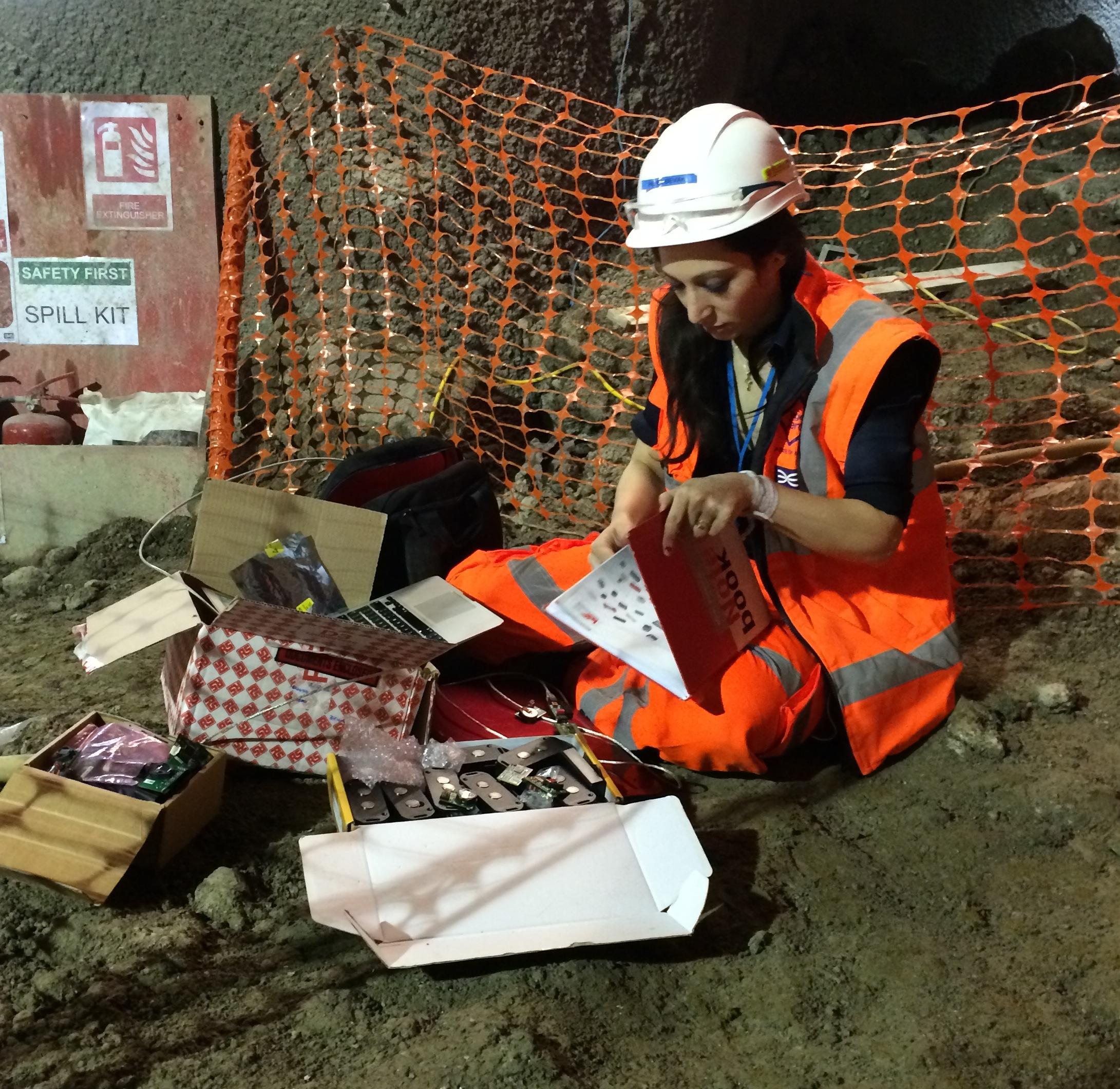
Submitted by Administrator on Wed, 22/10/2014 - 17:08
The UtterBerry, an intelligent wireless sensor system using the world’s smallest wireless sensors, has won an innovation award and is poised to take industry by storm.
The UtterBerry has won the Crossrail Best Practice/Innovation Award for contractors Costain-Skanska who deployed the technology at a partially sealed adit complex at its Eleanor Street site in London. The shaft had to be promptly closed to allow access for excavation but contractors needed to monitor the area during the work.
The system, developed and patented by Heba Bevan, a PhD student at CSIC at the University of Cambridge, consists of miniature, self-powered wireless UtterBerry sensors, able to perform on-board calculations to derive tunnel displacement, in real-time without human intervention. No access is required to keep the system running in potentially unsafe sites.
The sensors have been running in the Eleanor Street tunnel construction site since April 2014 and have enabled surveyors to remotely monitor the conditions and structural health of the tunnel from their offices in a safe and effective manner.
“Eleanor Street shaft was a challenge to engineers,” said Heba. “It is a sealed hole in the centre of London that required monitoring but there was no internet and no wireless signal to help get the data out. And there was a very limited time frame over a weekend for installation making the situation quite complex.”
The installation of the 29 sensors required for this site was performed quickly and easily by one person, who placed the sensors into position using just a 5m pole. A cable was inserted 60m down into the shaft from the contractor’s office on ground level and Heba connected this to her laptop allowing remote and 24-hour access to the data gathered by the system. This entire process was completed in one day.
“The contractors had looked for other monitoring systems but there was nothing available that could be fitted quickly and offer real-time monitoring,” said Heba. “But the UtterBerry had the capability to do the job.”
Nigel Marsh, Senior Surveyor for Costain, came across the UtterBerry after attending a course earlier this year at the University of Cambridge. “Once I’d seen it in action at a trial in a tunnel underneath Liverpool Street Station in London, I knew it was exactly what we needed. Not only is it 100 per cent remote but it uses almost no power, is very robust, highly accurate and is cheaper than both the traditional alternatives and newer technologies such as fibre-optics.”
Nigel said using the UtterBerry puts Costain at the cutting edge of innovative practice. “I believe it is the first time the device has been used in this type of environment. The results are proving very interesting – it even picked up sub-millimetre movements when the de-watering system was switched on and off as we re-routed pipes during shaft construction. There’s no doubt it could be used in many different applications in the construction industry.”
Data was available immediately, including temperature and humidity readings that flagged up the presence of water in the shaft helping to identify a broken pump. The sensors are still in place and providing data six months after installation.
The UtterBerry has already attracted acclaim and has been certified as Highly Commended in three Institution for Engineering and Technology (IET) Innovation Awards – the Asset Management Award, Built Environmental Award and Measurement in Action Award - but this most recent award recognises the success of the UtterBerry in action on a live project.
“The UtterBerry has been successfully used on other projects, including CSIC’s work in the Royal Mail tunnel, but this was a tremendous opportunity to test the entire potential of the device. The UtterBerry is a huge breakthrough for industry as it provides a mechanism that is easy to install and collects data remotely. It gathers information about the entire infrastructure being monitored and this has never been available to surveyors in this way before,” said Heba.
“The UtterBerry will change the way technology is used in infrastructure and could be used on all kinds of projects. I am still improving it and working on introducing more artificial intelligence but the sky is the limit.”
